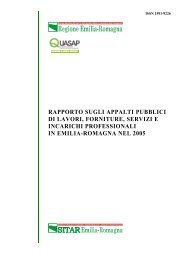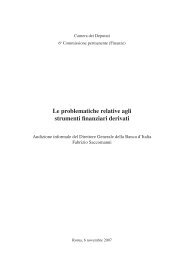Understanding the Public Services Industy
Understanding the Public Services Industy
Understanding the Public Services Industy
Create successful ePaper yourself
Turn your PDF publications into a flip-book with our unique Google optimized e-Paper software.
<strong>Public</strong> <strong>Services</strong> Industry Review<br />
2.21 O<strong>the</strong>r changes would assist in improving analysis of <strong>the</strong> PSI and in updating and<br />
extending <strong>the</strong> work done in this Review. These include:<br />
15<br />
• Provision of more detailed COFOG analysis in future PESA publications . This<br />
would allow PSI sectors, such as transport, to be specifically identified and<br />
quantified using <strong>the</strong> methodology described.<br />
•<br />
•<br />
•<br />
•<br />
Maintaining consistent time series for procurement and o<strong>the</strong>r key PESA data,<br />
ra<strong>the</strong>r than <strong>the</strong> current practice of revising data for 5 years only.<br />
In so far as possible, reconciling information on procurement obtained by<br />
OGC directly from departments with o<strong>the</strong>r published data (e.g. PESA, National<br />
Accounts).<br />
Ensuring that project evaluations are completed on a regular and consistent<br />
basis, ei<strong>the</strong>r by <strong>the</strong> commissioners or by organisations such as <strong>the</strong> NAO, OGC<br />
or 4ps. Although many such evaluations are done, <strong>the</strong>y are not systematically<br />
collated to produce generalised conclusions about service quality, cost savings<br />
and lessons learned.<br />
Building on <strong>the</strong> important work by National Statistics in measuring service<br />
quality to enable macro level estimates to be made of PSI productivity. This is a<br />
long term ambition, but would be very valuable in spurring PSI growth in those<br />
sectors where it brings greatest benefits.<br />
The Supply Side of <strong>the</strong> PSI<br />
2.22 There are various ways to categorise <strong>the</strong> supply side of <strong>the</strong> PSI market and <strong>the</strong>y<br />
typically differ from <strong>the</strong> demand side structure. Most of <strong>the</strong> private sector companies<br />
have both government and private sector clients. For most of <strong>the</strong> third sector PSI<br />
providers, government contracts are a source of funding alongside more traditional<br />
charitable and foundation support. Many private and third sector organisations operate<br />
in o<strong>the</strong>r countries as well as <strong>the</strong> UK.<br />
2.23 The DCLG/PwC report on developing <strong>the</strong> local government services market divided<br />
supply side procurement into five sectors: professional services, construction services,<br />
IT services, managed services and products. Oxford Economics’ work for <strong>the</strong> CBI 16<br />
fur<strong>the</strong>r categorised supply into facilities management, consulting and HR activities.<br />
Private and third sector organisations are also described, represented and analysed by<br />
a range of industry associations and market research firms.<br />
2.24 For <strong>the</strong> purpose of this Review, <strong>the</strong> following six sectors have been considered<br />
although in many cases <strong>the</strong>re is a some overlap between <strong>the</strong>m:<br />
15 HMT has suggested that future PESA publications should include two digit COFOG analysis.<br />
16 The size of <strong>the</strong> market for providing public services in <strong>the</strong> UK, Oxford Economics (Commissioned by CBI) (2008).<br />
20
















